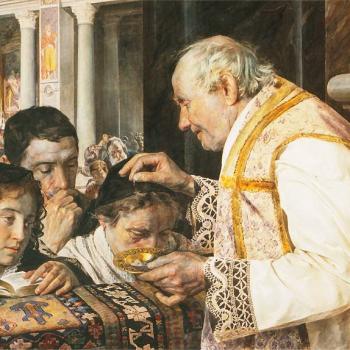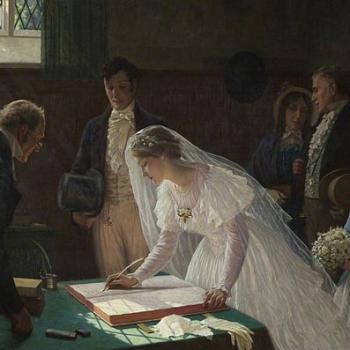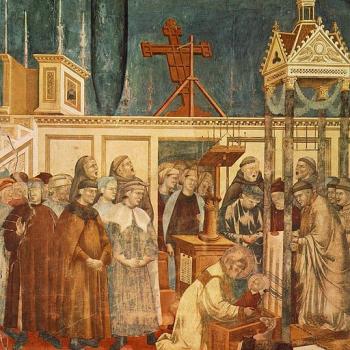I meant to write this yesterday after the Good Friday service, but I think it is still valid today.
Yesterday during the service we sang the classic spiritual “Were You There?” Some small part of me always smiles when I hear this beautiful hymn. To understand the joke, some history. The alma mater of Trinity College, “Neath the Elms” was written more than 100 years ago. The history of the song is interesting: a student was suspended for a term (“rusticated” in the language of the day) and was sitting around the house longing for the good times at Trinity. Then one day he overheard his black butler singing while doing housework, and (he later said) the words to the alma mater came to him all at once. The butler was singing “Were You There” and this became the tune. And so, every time I hear this hymn I hear it combined with the alma mater as sung by some wags on the faculty:
Were you there when the crucified my Lord, ‘neath the elms of dear old Trinity?
I can now hear some of my readers: “Cute, but really, on Good Friday?” Yes, it really is, if you reflect upon it. I am reminded of the Admonition of St. Francis:
And all the creatures, which are under heaven, each according to its nature, serve, know and obey their Creator better than you. · And even the demons did not crucify Him, but you together with them have crucified Him and even now you crucify (Him) by delighting in vices and sins.
In every bitter word, in every petty division (and academia contains plenty of both), Christ is crucified again. In every selfish act, Christ is crucified. In every hungry man who is unfed, in every baby killed in the womb, in every racist act, Christ is crucified again. In every bomb dropped in support of “freedom and democracy” around the globe, Christ is crucified again. So yes, “neath the Elms” and all around the world, we are there when the Lord is crucified.
If this were the end of the story, then all would be lost. Indeed, I wonder sometimes if the underlying problem in the modern, post-Christian world, is that this is where people are stuck. They see the sin, and they sense Christ crucified, but they cannot or will not look upon “the one they have pierced.”
As Christians, however, we must begin here but we cannot end here. Sin is not the final word. For if we crucify Christ by our vices and sins, then, in our baptism, by His grace, we are crucified with him, dying to our vices and sins. As St. Paul said,
For we know that our old self was crucified with him so that the body ruled by sin might be done away with, that we should no longer be slaves to sin—because anyone who has died has been set free from sin. (Rm 6:6-7)
So on this Holy Saturday, poised between Good Friday and Easter, as all the world trembles in fear and expectation we need to remember our sins, remember that we are the ones who crucified our Lord, but we also need to remember that in his death and resurrection we are redeemed. Our sins will not triumph unless we let them. Let us glory in the cross of Christ, for through it sin and death have been vanquished. Christ is risen! Alleluia!











